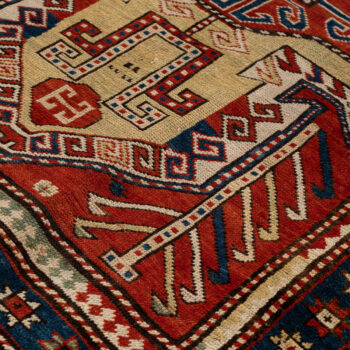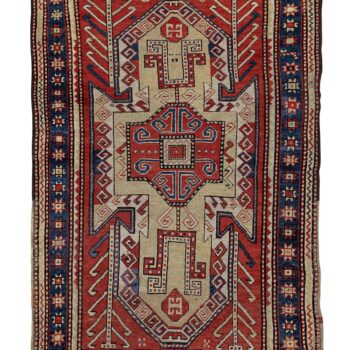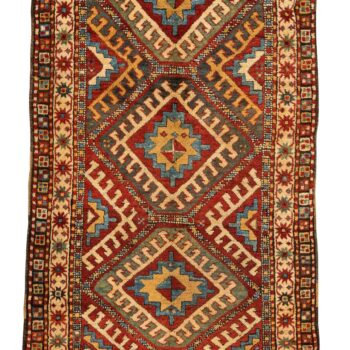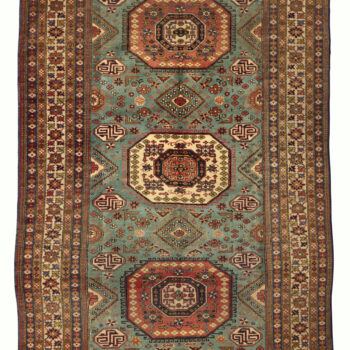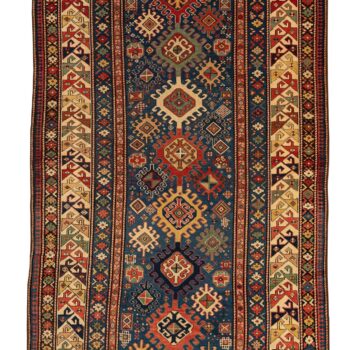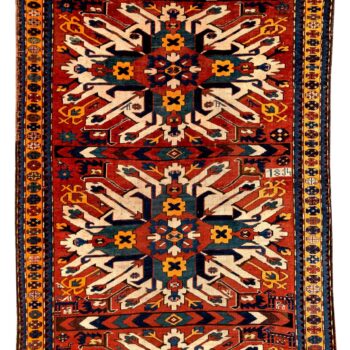Kazak
Kazak is a district located in the southwestern region of the Caucasus, northwest of Lake Sewan, in Armenia. In the past, the Kazak region was populated by Armenian dyers and weavers, Azeri Turks, groups from North Caucasus, and other groups from surrounding areas. The result of this rich cultural mix has been the making of the finest Caucasian rugs, making Kazak one of the most recognized areas of the Caucasus. Kazak rugs are distinct and unique. The designs include “memling guls”, human figures, animals, symbolic motifs, dramatic medallions, crenelated borders, angled and hooked cloud bands, and more.


In the early 19th century, weavers began to apply their creativity and artistic skills in developing new attractive designs tailored to the international market. Caucasian rug experts often value these fine Kazak rugs. They feature amazing geometric shapes and vibrant colors. Rugs from the Kazak district are usually made from 100% wool, and cotton is rarely added. The high-quality wool of the Kazak rugs comes from the sheep that live in the mountains of the region, which gives the rug a silky and soft texture. The central area of Kazak rugs feature saturated colors such as red, blue, ivory and green. Additionally, variations of golden yellow, brown, and rust-red appear in the geometric motifs and borders.
A feature that brings value to these rugs are the saturated colors, the result of natural dyeing which give Kazak rugs a high aesthetic value. Unlike many other styles of antique rugs, large archetypal motifs feature prominently in the central field, producing profound visual effects.
Usually, Kazak rugs are linked to specific regions and villages, but when this cannot be identified, they are named according to the geometric pattern employed or simply by the broader term Kazak. Each village in the Kazak district has its own designs and use of colors – Borjalou, Fachralo, Karatchov, Lombalo, Lori Pombak, Sewan, among others. In the Karatchov, Sewan and Fachralo regions, the color green is used on the main area, and borders of the rug. In the village of Lori Pambak, artists often use gray coloring on medallions and borders. The village of Lomaballo mainly uses dark blue.
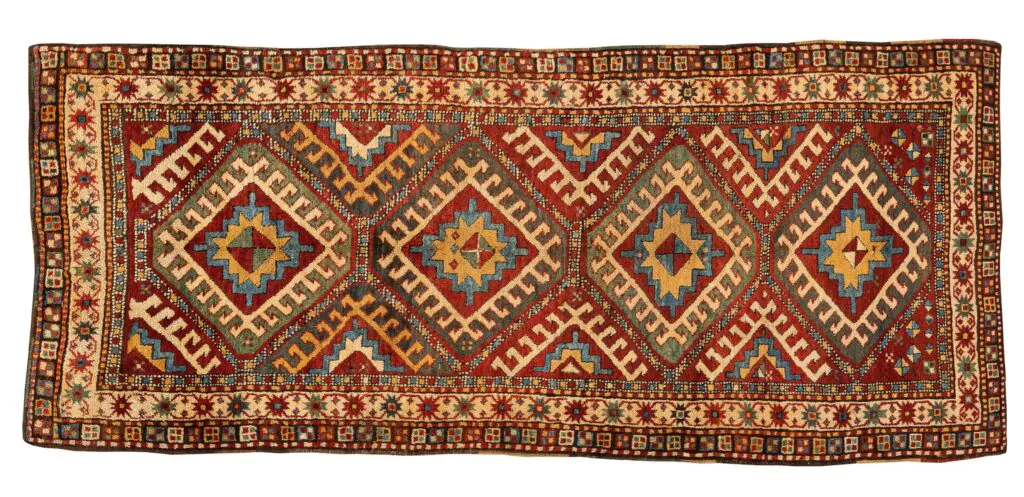
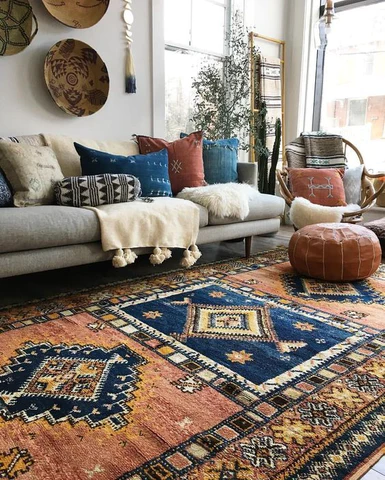
Famed for their rich colors, assertive geometric, bold, and large-scale designs, Kazak rugs are sought after by collectors for their originality. But they are also great rugs for use in contemporary settings and will add class and an oriental touch to a well-designed room. Interior designers tend to use the complexity of the geometric figures of Kazak rugs to balance a minimalist design. Kazak rugs are great options for rooms with neutral color palate furniture, since it will bring contrast and life to its environment with tones of ruby red, ivory and sapphire .. Personal preferences will vary when it comes to pairing fine furniture with Kazak rugs. Some experts highlight that contemporary furniture with economy of design highlights the richness of the textile art of a Kazak rug. Others prefer to combine the elegant geometry of Kazak rugs with more traditional furniture.
One of the most attractive aspects of antique Kazak rugs is their ability to withstand time due to the incomparable dyeing ability made by the Azeris and the natural materials used in their dyes. The brightness of the dye remains for decades and often for centuries, depending on how it was preserved.
These spectacular handmade rugs embody the distinctive Kazak culture. Its vivid colors and rich variety of symbols continue to delight collectors and connoisseurs of oriental rugs. Antique rugs have always attracted the attention of collectors for their artistic design and the use of natural dyes in wool. They are among the most prized rugs in the Caucasus. They are today in high demand by museums and collectors.
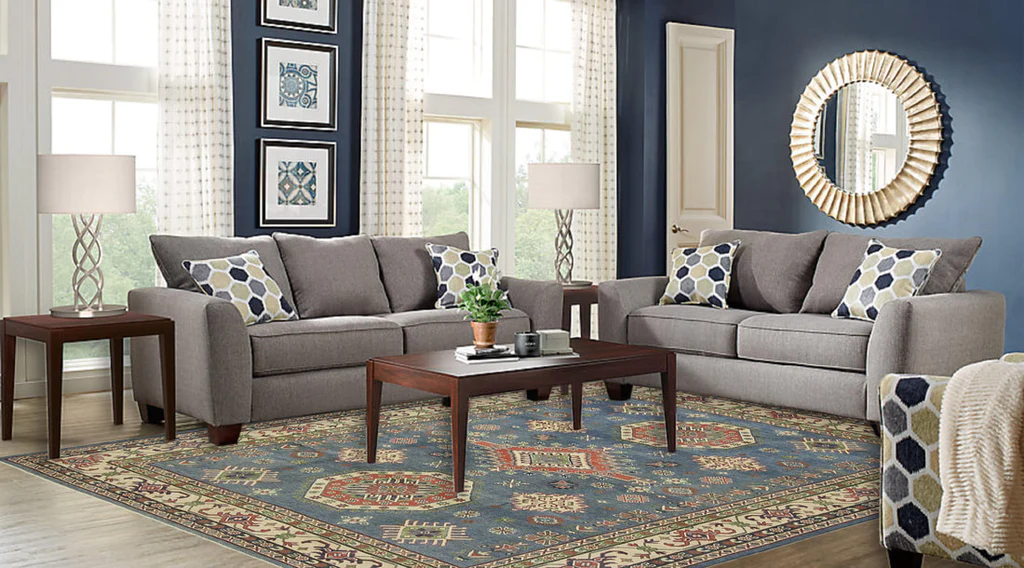

Figalli Oriental Rugs
We do not sell rugs. We bring rare works of art to your home in the form of rugs.
Our services
You are Protected
Copyright © 2023 Figalli Oriental Rugs, All rights reserved. Desenvolvido por Agência DLB – Agência de Marketing Digital em Porto Alegre

